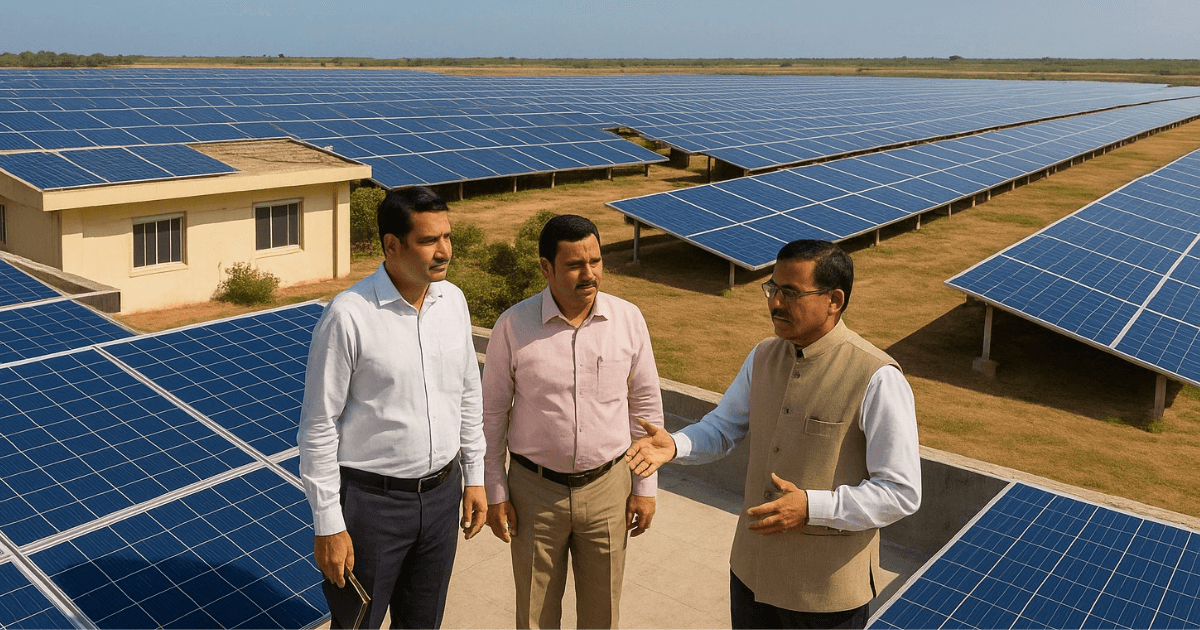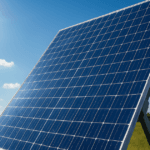
Diu: India’s First Fully Solar-Powered District Leading the Clean Energy Revolution
I’ve always been fascinated by places that lead by example—and Diu, a serene coastal town in India, has done just that by becoming India’s first fully solar-powered district. This isn’t just a green initiative; it’s a bold declaration that sustainability and progress can go hand in hand. In a nation striving for energy independence, Diu has emerged as a quiet yet powerful revolution in clean energy.
With solar power lighting up homes, schools, and public infrastructure, Diu has achieved consistent, eco-friendly electricity without damaging the planet. This decision wasn’t just visionary—it was strategically executed with community cooperation, strong planning, and a commitment to self-reliance.
What makes Diu’s story truly exceptional is its balance of development and environmental responsibility. It’s not just a district achievement—it’s a national milestone we all can learn from.
 Let’s dive into how this quiet town led India’s solar revolution and what we can take away from its remarkable journey.
Let’s dive into how this quiet town led India’s solar revolution and what we can take away from its remarkable journey.
How Diu Became India’s First Fully Solar-Powered District
When I first read about Diu’s transformation, I was amazed at how sheer determination and smart planning reshaped its energy future. For years, Diu relied on electricity imported from Gujarat, facing frequent outages and high costs. Accepting the necessity of change, the management took a leap of faith toward solar energy as an assured long-term option.
Over 13 megawatts (MW) of solar power capacity were installed via both ground-mounted farms and rooftop systems. By utilizing vacant government lands and building tops, Diu maximized space while minimizing its carbon footprint.
 Now that we’ve seen how Diu made the switch, let’s explore the benefits people in Diu are experiencing today.
Now that we’ve seen how Diu made the switch, let’s explore the benefits people in Diu are experiencing today.
Benefits of Solar Power in Diu: A Model for Smart Sustainability
Living in Diu today means waking up to clean, quiet, and uninterrupted electricity that powers homes, hospitals, and public services. Indeed, on one hand, solar energy reflects on-the-ground reality by entailing lower power bills, cleaner air, and less frequent outages in households, and on the other, puts forth that this energy source is environmentally and economically smart.
Diu has significantly reduced its carbon emissions by lowering its reliance on fossil fuels and diesel generators. Additionally, during periods of maximum sunlight, the district generates more energy than it uses, improving grid stability and creating an energy surplus. As a result, Diu has become a symbol of wise, sustainable growth in India.
At Poornta X Renewable, we see this as proof that a greener future is not only possible—it’s practical. We help individuals and communities make a seamless, cost-effective shift to solar that pays off in every aspect of life.
 But how exactly is this solar success managed? Let’s uncover the infrastructure behind this transformation.
But how exactly is this solar success managed? Let’s uncover the infrastructure behind this transformation.
Diu Solar Project Details: Installed Capacity, Infrastructure & Management
The solar success of Diu lies in its well-planned and integrated infrastructure. With over 13 MW of installed capacity, Diu uses a mix of ground-mounted solar parks and rooftop solar panels installed on government buildings, schools, and private homes.
Hybrid energy systems being erected allow the production of energy from open lands to rooftops. Energy distribution on the smart grid ensures effectiveness on energy distribution, providing a steady supply of energy to each corner of the district, even when demand is high.
The entire system is regularly monitored and maintained by trained professionals, ensuring optimum output year-round.

But Diu is just one success story. Can other Indian cities follow suit?
Can Other Cities in India Learn from Diu’s Solar Model?
Surely solar powered Diu is an inspiration for all its achievements, but the real achievement is that such an alternative can actually replicate itself. Cities and towns across India, particularly those that suffer from high energy costs or limited access to power, could adopt Diu’s hybrid solar model-the combination of rooftops and ground-mounted systems.
Warmer technologies will be of higher technology-not just execution. The intention, planning, and public consultation leads to successful implementation in the Diu project. Other areas would require strong-policy support, public awareness, and expert partners to make solar power a reality.
With increasing demand for electricity and imminent environmental concerns, now is the time to take this model of Diu and turn it into a national clean energy movement.

Want to know more about Diu’s journey? Let’s answer some common questions.
Frequently Asked Questions (FAQs) about Solar Powered Diu
- Is Diu really 100% solar-powered?
Yes, during peak sunlight hours, Diu generates more energy than it consumes, making it self-sufficient and often surplus in solar electricity.
2. Is solar energy feasible only in sunny regions like Diu?
No, solar energy is not limited to sunny regions like Diu — it works efficiently even in cloudy areas. With the right setup, solar panels can generate power year-round across India. - When did Diu start its solar journey?
Diu began its solar powered transition around 2017, and within a short period, it scaled up to meet its energy needs sustainably. - What are the main sources of solar power in Diu?
The district uses a combination of ground-mounted solar farms and rooftop installations, distributed across public and private buildings. - Can other cities replicate Diu’s success?
Yes, with proper planning, government support, and expert implementation from solution providers like Poornta X Renewable, other regions can follow this model.









